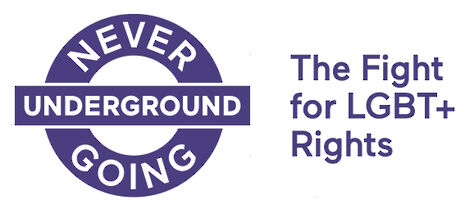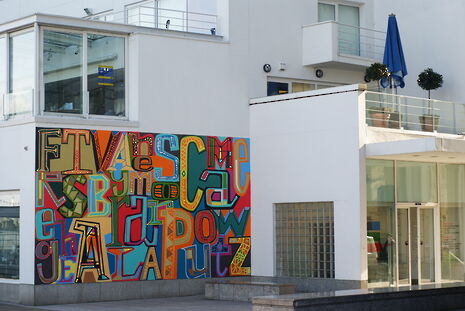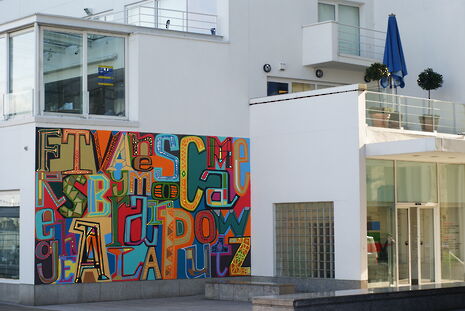Vulture’s Top 5 exhibitions of 2017
We look back on the top 5 exhibitions of the year, drawing on themes of art, politics and history

This year, creative giants such as Modigliani, Giacometti and Michelangelo have graced the art scene of the capital. Whilst great exhibitions are primarily associated with the great works of the well-established canon of art, Holly Firmin discusses some lesser known shows the UK has had to offer over the past year: exhibits which explore hugely significant political and historical moments as well as artistic ones. Although renowned shows such as the exhibition of Cézanne's work at the National Portrait Gallery should not go amiss, such a selection reveals the importance of celebrating both social and political success, reviewing what it adds to the world of culture.
5. Mail Rail, The Postal Museum, London
The Postal Museum re-opened its doors earlier this year, with its all new ‘Mail Rail’ ride. Whilst the actual postal museum is not in itself an attraction with much appeal for adult audiences (being geared towards younger children and school groups), the opening of the Mail Rail represents an exciting experiment in public history. Opening up a section of the original Mail Rail, in operation under the streets of London between 1927 and 2003, addresses some of the obstacles faced when telling a story of connectivity from the vantage point of a stationary museum. Projections are used to tell the story of the network as you ride the train - an innovative, and visually impressive experience, which could provide a useful model for transport and communications networks elsewhere looking for the best way to tell their own histories.
4. The Most Popular Art Exhibition Ever, The Serpentine, London

Grayson Perry’s exhibition at the Serpentine this year offered, in the wake of Brexit and Trump, a poignant piece of social and political commentary. Perry explains that one of his main aims is to widen the audience for contemporary art, and his use of traditional forms – vases, tapestries, sculptures – as the foundation of his social commentary serves as a parody of the art world and its historic exclusivity. A personal favourite of mine was the vase emblazoned with phrases reading, ‘I’ve read all of the academic work on empathy’, and ‘war and poverty are bad, I leant that at university’. Perry describes such mediums as a ‘guerilla tactic’ for addressing some of the ‘difficult elephants in the room for our British society’. One room of the exhibition is dedicated to Brexit, another, the topic of masculinity: two huge ‘elephants’ Grayson tackles in an engaging way. The Serpentine’s exhibition of the artist’s work was the only one free to enter on this list, making it inherently more accessible than those charging large entry fees.
3. Never Going Underground, People's History Museum, Manchester

It was not only the anniversary of the Russian Revolution this year, but the 50th anniversary of the decriminalisation of homosexuality in the UK. The exhibition itself was named after the campaign launched against Section 28 in Manchester in 1988 and was curated in consultation with members of the local LGBT+ community. In comparison to the larger, national exhibitions held to mark the anniversary, this localised effort most accurately reflected the plurality of LGBT+ activist histories: characterised by diversity, struggle, conflict, and often organised at a local level.
2. The American Dream: pop to the present, British Museum, London
This exhibition of 20th century American pop art represented an attempt by the British Museum to target a new audience: a younger generation more commonly found frequenting the Tate Modern than those searching for the Rosetta Stone. This was a welcome diversification of the British Museum’s program, drawing on works in the collection never before publicly displayed, whilst borrowing complementary pieces from private collectors, museums and galleries around the world. The exhibition therefore featured work from big names, such as Andy Warhol, Robert Rauschenberg, Ed Ruscha and Jasper Johns. The American Dream successfully weaved this impressive collection with discussions of political developments in America in the latter half of the 20th century. Hopefully such a formula will be replicated by the British Museum in 2018, allowing it to further diversify its collections and audiences.
1. Imagine Moscow, The Design Museum, London

Exploring how Moscow was imagined by a bold new generation of architects and designers in the 1920s and 1930s, this exhibition gave a fascinating insight into the transformative ideas borne in the wake of the Russian Revolution. However, rather than simply being a history of early 20th century architecture in Moscow, this was a history of buildings that actually never came to exist. Imagine Moscow, which adopted such a novel perspective, successfully set itself apart from the numerous exhibitions seen this year marking the 100th anniversary of the Revolution, transporting visitors inside the minds of these designers’ visions of utopia through its focus on six unbuilt projects; imagination was privileged as much as concrete. The exhibition successfully weaved architectural history with social and political historical narratives to stunning effect

 News / CUP announces funding scheme for under-represented academics19 December 2025
News / CUP announces funding scheme for under-represented academics19 December 2025 News / Cambridge welcomes UK rejoining the Erasmus scheme20 December 2025
News / Cambridge welcomes UK rejoining the Erasmus scheme20 December 2025 Comment / Yes, I’m brown – but I have more important things to say22 December 2025
Comment / Yes, I’m brown – but I have more important things to say22 December 2025 News / SU reluctantly registers controversial women’s soc18 December 2025
News / SU reluctantly registers controversial women’s soc18 December 2025 Film & TV / Timothée Chalamet and the era-fication of film marketing21 December 2025
Film & TV / Timothée Chalamet and the era-fication of film marketing21 December 2025








